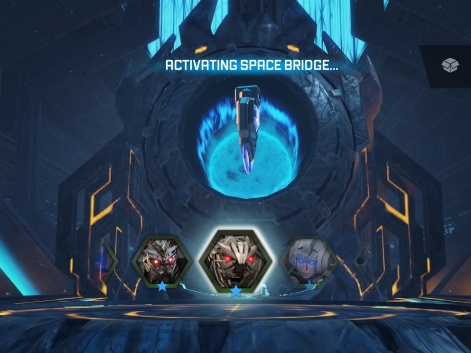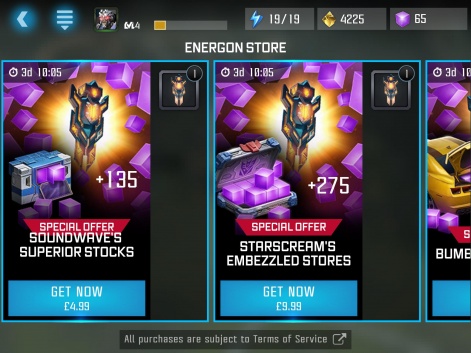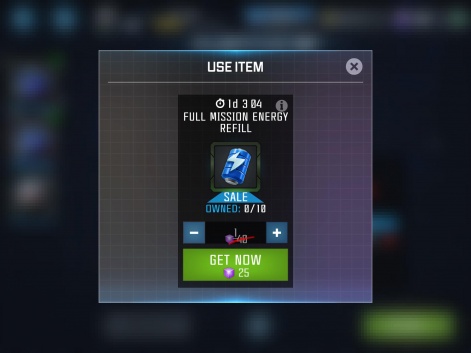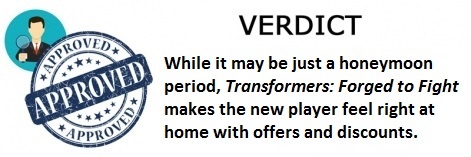Welcome back to the In-App Purchase Inspector- our regular look at free-to-play games from the consumer's perspective.
In each instalment, we consider the incentives or pressure applied to make in-app purchases, their perceived value, the expansion offered by IAPs and the overall value of the experience.
The end goal is to see whether the game makes a good enough case for us to part with our cash, or whether players are content - or engaged enough - to 'freeload'.
This time, we're taking a look at Transformers: Forged to Fight, the first release from Kabam Vancouver since its acquisition by Netmarble, and the game it hopes can enjoy similar success to its previous hit Marvel: Contest of Champions.
Next round
Comparisons between Transformers: Forged to Fight and Marvel: Contest of Champions are unavoidable.
The set-up is nigh-on identical, with both games built around collecting new heroes, levelling them up and taking them into simple yet satisfying one-on-one brawls.

Kabam is one of the few developers to make this kind of gameplay feel like a natural fit for touchscreen, eschewing on-screen buttons for inuitive taps and swipes on either side of the screen to move, block and initiate various attacks.
It's a formula that could work with almost any IP with a large roster of characters.
And it's a formula you can imagine being successfully applied to almost any IP with a large roster of characters, with combat satisfying in quick bursts but feeding into the ongoing aim of building and upgrading a formidable squad.
Transform cash into bots
Much like in Marvel: Contest of Champions, and indeed Space Ape's build-and-battler Transformers: Earth Wars, the monetisation here revolves heavily around a gacha mechanic.
One Premium Bot Crystal will cost you 100 Energon, Forged to Fight's hard currency, providing in return a two to four-star bot.
Each is presented with considerable ceremony too, with the player dragging the crystal into place to activate the famous Space Bridge, which serves as the game's summoning portal.

But it's important to have a sizeable squad, as is reflected in the way that Forged to Fight gifts the player several one-star bots in the early game.
Indeed, as well as the three-bot squad that you actively play with in missions, Forged to Fight takes its own inspiration from the build-and-battle genre with the asynchronous Raid mode, in which players can attack one another's bases.
It's very difficult to even run out of single-player energy in the early stages.
To protect their own, players can place the bots they're not using in active combat. This keeps the focus streamlined on bots and bot upgrades, while ensuring that the player doesn't neglect those outside of their strongest trio.
Welcome aboard
Later in the game, it's easy to see how this ramp-up in competition level - in the single-player component, the Raid mode and the Arena - could be used to apply pressure to spend.
But this is not how Kabam wants to introduce the experience, with rapid levelling up that increases your max energy, drops soft currency Gold and Energon, as well as lots of Ore-13 - the resource used for upgrading bots.
It's very difficult to even run out of single-player energy in the early stages, particularly as extra energy is awarded seemingly at random as you progress.
Should you run out of Energon, there are even more concessions for the new player. Not content to offer a starter bundle or two, Forged to Fight instead takes over the entire store with special offers.

A cheap highlight is the Crystal Booster Pack for $1.99, which includes a Premium Bot Crystal, a full energy refill, 1,000 Gold and two Tier-1 Repair Kits (restoring 250 Health apiece).
It's hard to get a full idea of just how much value starter offers represent.
The only potential flaw here is that the regular pricing is not on display in these early stages, meaning that it's hard to get a full idea of just how much value these offers represent.
Jack of all trades
Forged to Fight is keen to ensure that the player engages in all its modes, and it does this by separating the resources earned and spent in each.
Single-player missions are subject to the aforementioned energy system - it costs 25 Energon to refill as a new player, 40 ordinarily - and completing them yields Ore-13.

To raid another player, however, costs one Raid Ticket. You only have three, they can't be replenished with Energon and each takes one hour to restore.
Completing Raids also gives a different reward: Raid Chips, which are used to buy resources such as Spark. This is then used to rank up a bot when it reaches its max level, so plays a crucial role in the metagame.
The depth of these interlocking systems is potentially intimidating to new players, but it is also what will keep the committed among them coming back for more.
More than meets the eye?
With its predecessor Marvel: Contest of Champions proving that a deep and involving experience partnered with a beloved IP can hold players' attentions for years, Kabam is used to playing the long game.
It feels very much as though this is the case with Transformers: Forged to Fight, with special discounts for new players and concessions made to ensure that early impressions are as smooth as possible.
First of all, it wants players to stick around. It's not pushing players to spend the first time they open the app, but instead focuses on establishing the core loop and getting users invested in it.
Whether this will work out for the firm remains to be seen, but there's no doubt that it's an admirable approach.






















